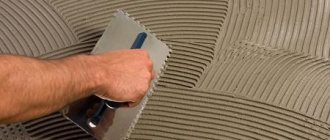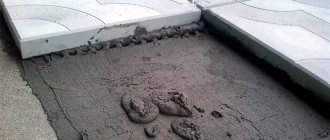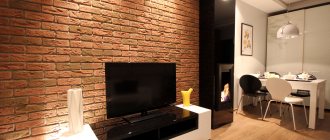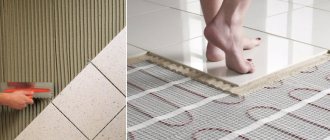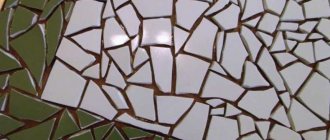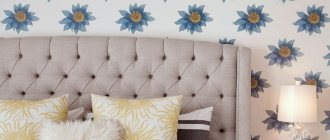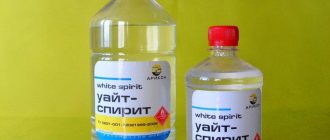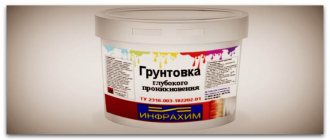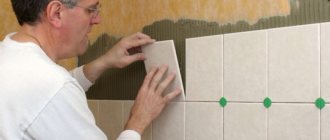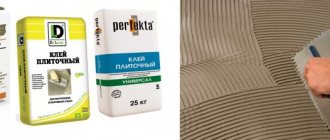How to glue ceramic tiles
Taking into account the peculiarity of ceramic cladding, the adhesive is produced:
- With a low degree of water absorption, which is determined by the thickness of the texture. Ceramics, unlike other tile materials, does not absorb water or adhesive solutions. Therefore, the glue must contain additives that increase adhesion.
- Hardness prevents the cladding elements from bending, but this also imparts fragility, which is affected by loads and temperature changes. Therefore, the adhesive must be flexible in order to compensate for the resulting tension between the facing coating and the base. Flexibility is important when laying tile material on a “warm floor” system.
- Tolerant to changes in temperature conditions. Such products are used when facing from the street. In this case, you need to pay attention to the number of cycles.
Two types of tile adhesive are produced:
- ready-made products packaged in buckets;
- dry compounds packaged in bags.
These types differ in consistency and composition. In ready-made mixtures the base is polyurethane, in dry mixtures it is cement. Dry mixtures have a number of advantages: laying tiles on an uneven surface, long service life, easier to dismantle.
According to their characteristics, adhesive masses are divided into:
- Fast setting. Complete drying of the layer occurs after three hours. This ensures maximum grip. Laying tiles and grouting is done in one day. The downside is that the work must be done at an accelerated pace, otherwise the mass will harden and application will be impossible.
- Corrective (leveling). There is no need to do any preparatory work before application. Capable of leveling plane defects up to 5 mm.
- Highly flexible adhesive. Such products contain additives in the form of plasticizers. The application is reasonable on planes subject to deformation processes (shrinkage). Laying is done on wooden surfaces, plasterboard, foam concrete, cement.
- Heat resistant. It is used for lining stoves and “warm floor” systems. Has increased flexibility.
- Frost-resistant. Used in humid conditions and subzero temperatures. Cladding is done both from the street and from the inside of the room. The type of product is universal.
- Thick layer. Designed for tiling large tiles, with a layer thickness of up to 12 mm. Installation is carried out only inside the building.
- Universal. It has average characteristics for indoor and outdoor work.
- Increased fixation. For heavy ceramic tiles of large sizes. Provides increased adhesion while withstanding dynamic and static loads. It is not susceptible to moisture and is flexible.
The areas of application of some types of adhesives are presented in the table:
The best examples of these types on the market are:
- Ceresit SM12 for large-sized ceramic tiles. It has plasticity, which prevents the appearance of empty spaces under the tiles. Used for cladding work inside and outside the building. Moisture-, frost-resistant.
- Knauf Fliesen Plus with reinforced fixation. For laying tiles measuring 40x40 on vertical planes, 60x60 on horizontal ones. Increased adhesion, efficiency. It is used for indoor work, for the “warm floor” system, and does not act as a leveling agent.
- Weber Vetonit Easy Fix is used for cladding plasterboard, without the need for preliminary preparation. Acts as a leveling agent. Frost- and moisture-resistant product. Work is carried out indoors and outdoors, on horizontal and vertical planes.
Adhesive mastic
This material was originally intended for insulation and roof repair. It comes in two types: hard and soft. The first type is not suitable for tiles because the consistency is too dense and the content of adhesive components in the composition is low.
The second type of mastic has a paste-like state and is applied with a spatula. It is intended for installation of roofing felt and other rolled materials. Such compositions are characterized by increased adhesive properties.
Sold in plastic buckets of various sizes. Apply to the tiles with a spatula, the layer thickness should be 3-5 cm.
It is worth considering that mastics are designed for specific types of substrates and gluing materials. Mastic based on synthetic rubber interacts best with concrete surfaces.
How and with what to glue ceramic tiles to concrete
When gluing tiles to concrete, craftsmen use both a paste-like type of glue and a dry mixture.
The first type with a thick consistency contains water; when it evaporates, the material adheres to the surface. This is an easier way of gluing.
The dry mixture contains cement and sand. It is used in various works and is considered more reliable than the ready-made mixture.
The following types of glue are used for laying on concrete:
- Universal. A popular option because it is multifunctional.
- Base. Used for cladding large slabs.
- Reinforced. Also used when working with large slabs, and when gluing peeled parts.
- Highly specialized. Suitable for work with high temperatures and humidity.
Silicone sealant
Convenient and practical sealant does not require dilution in water and does not leave behind dirt. Construction silicone is sold in tubes of different types and shapes and is intended for two applications: manual and pneumatic. The first method of use involves squeezing out the contents manually and is available in soft tubes of various sizes.
The second type of container is designed for installation in a special gun.
Silicone has high elasticity and resistance to moisture. Therefore, it can be used even in damp conditions. But it is advisable to use silicone in situations where it is necessary to glue only 1-2 fallen tiles.
A tile on the wall has fallen off: how to glue it
A common cause of peeling of the cladding from the wall is due to incorrectly selected soil material or installation without following the technology.
The entire area next to the fallen tile is inspected. If voids are identified by tapping, then such tiles are also removed. If more than 20% of the total facing area has peeled off, then the coating is completely redone.
To replace, use tiles from leftovers after repairs (if preserved) or buy a new one. If such options are not suitable, then you will have to clean the peeled coating. To do this, first the side parts are cleaned of grout, then the back side is cleared of any remaining adhesive mass. The wall surface is also cleaned of glue and primed.
The primer should provide the formation of a layer for better adhesion, and not form a layer that prevents the solution from absorbing into the base.
When replacing tiles, laying begins from the top row. Any adhesive that bleeds through the seams is immediately removed. All replacements are placed level with the old masonry.
To ensure that the inserted tiles are not noticeable, all the grout in the joints is cleaned and a new one is applied.
The glue is selected depending on the specifics of the room. If the replacement is made in the bathroom or kitchen, then the adhesive base must be moisture-resistant, heat-resistant, and elastic.
Useful video on the topic:
Required Tools
Fragmentary wear and tear on the tile trim can easily turn into a major overhaul. Therefore, it is recommended to fasten fallen tiles quickly.
To do this you will need the following tools:
- Toothed, cap, regular and rubber spatulas;
- Rubber mallet;
- Chisel;
- Level;
- Paint brush;
- Mounting crosses;
- Sandpaper of different grain sizes;
- Brush and rags;
- Containers for working with the solution.
If corner tiles collapse and possibly crack, you will have to use a tile cutter. But before you take on the machine, you need to purchase tiles of the required series or the most similar analogue.
It is quite possible that you will have to wipe off the hardened layer of glue with a brush attached to an electric drill or hammer drill.
Making your own tile adhesive
Self-prepared raw materials for work are the key to quality repairs.
The first option of raw materials for which you will need:
- foam plastic blocks 20x20x20 mm;
- acetone.
Blocks are laid out on the back side of the tile, on all corners and in the middle, and acetone is carefully dripped on top. After a few seconds, the foam blocks begin to dissolve. The resulting solution firmly adheres the tiles to the wall.
For the second option for preparing the solution, you will need sand, cement, PVA glue, and water. The basis here is sand, it is taken in a fine fraction, purified.
Removing adhesive from grout joints and the face of tiles
Before starting grouting, you need to remove all remaining glue particles, as they can significantly spoil the quality of the entire work: the grout itself does not fit very well on such uncleaned seams, does not look aesthetically pleasing, and can subsequently crack. Therefore, it is better to get rid of glue residues, and the sooner this is done, the better. If the excess glue is still fresh, you can even remove it with a knife . But if the glue has time to harden and dry, then there cannot be a universal remedy, since there is a high probability that it cannot be removed. However, you can try using a special knife for grout joints , which is used to make a cut in the middle of the seam, and then cut off the remaining parts of the glue along the edges.
Tips for applying glue
When applying glue, you must follow the following technology:
- The operating temperature is maintained between 18-24 degrees. Lowering or increasing the value will affect the quality of adhesion and the speed of hardening.
- Carrying out preparatory work. They are associated with the preparation of tools, the protection of finishing elements that are located in the same room from contamination, and the preparation of the base. The furniture is covered with oilcloth and fabric. The surface is cleaned of dirt, leveled and primed if necessary.
- Applying adhesive to ceramic tiles. A special comb is used for distribution. The solution is applied with the flat side of the tool, and then distributed with teeth. The size of the teeth is selected in accordance with the size of the tile material.
The movement of the comb is done in one direction, this promotes greater release of air from the solution.
- Removing excess glue. Removal is carried out between the seams, on the front side of the tile.
Interesting video on the topic:
What are the benefits of using tiles for interior design?
In order for you to accurately decide whether it is worth using tiles when renovating a room, pay attention to what its use will give you. Tiles have disadvantages that wallpaper does not, for example, they need to be laid correctly, and special materials must be used for installation. But this is the most pronounced drawback, but tiles have many more advantages.
- This is a very durable material that can withstand exposure to aggressive environments while maintaining an attractive appearance. It is for this reason that tiles are used where there is a lot of steam, moisture, and large temperature changes;
- This coating remains in excellent appearance for as long as possible - if you install it correctly, you won’t have to think about updating it for 10-15 years, and if you clean the seams on time and re-glue parts of the tile somewhere, then even 20-25!;
- A huge range of prices, from which everyone can find the best option for themselves. You don’t need to put off repairs in order to later purchase an expensive and high-quality coating; the tiles perfectly imitate the relief and appearance of many minerals, and the quality is always at the same level;
- Can be used on almost any surface, especially tiles, it is effective where there is a lot of water, dirt or conditions differ from standard ones. Since tile is easy to care for and can be washed, which cannot be said about wallpaper, it is simply irreplaceable in the kitchen. But its properties will not be out of place in the living room either.
